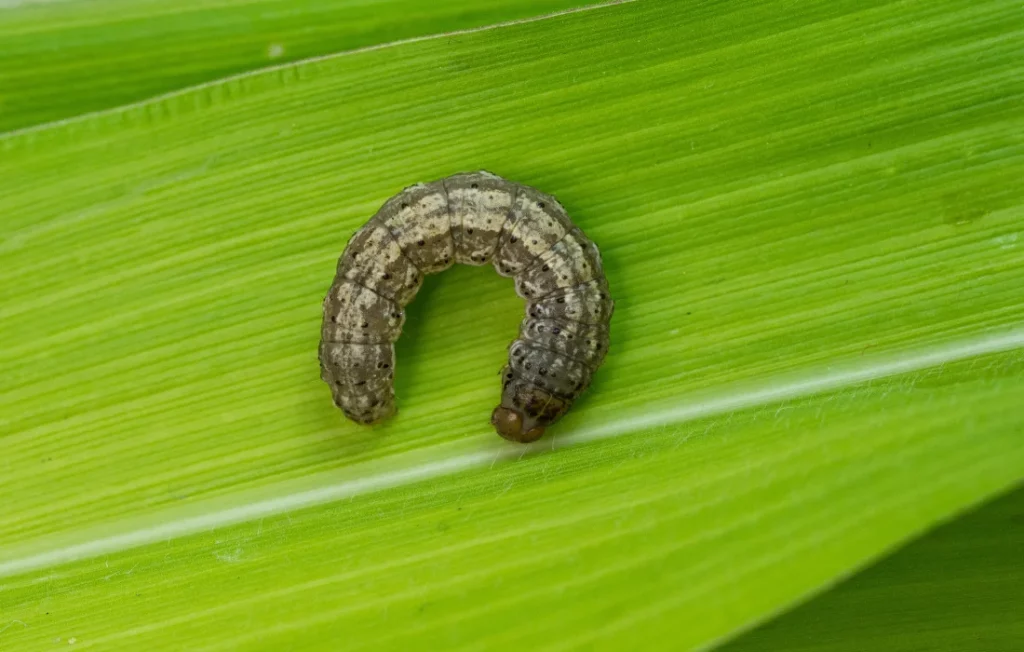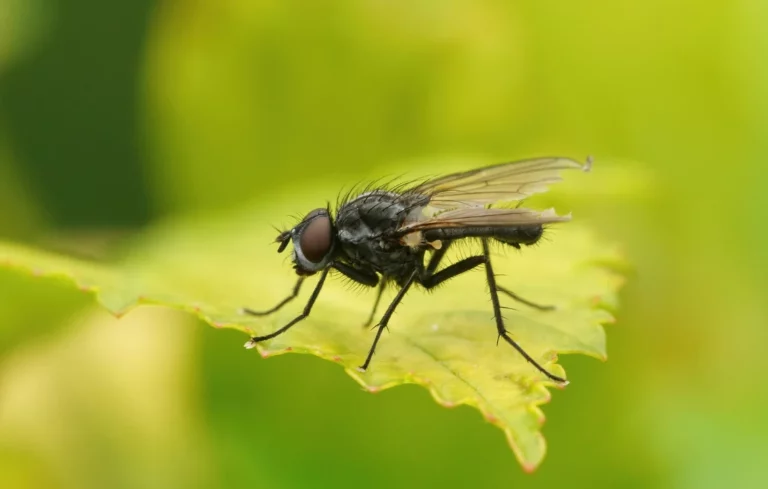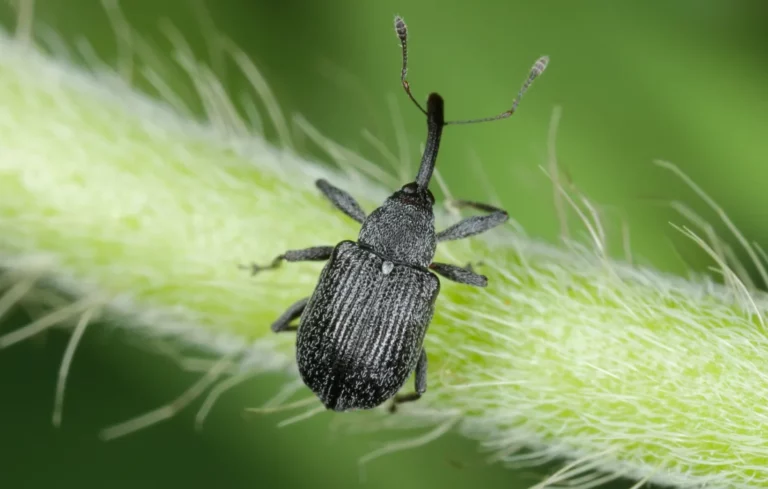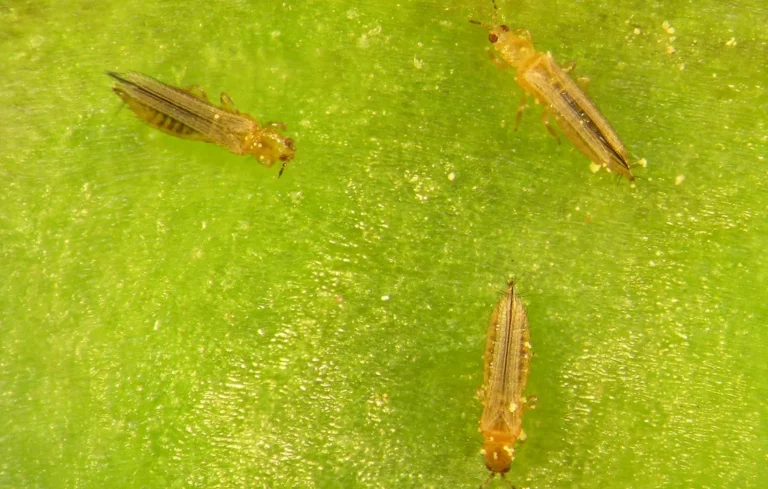Present in many vegetable and field crops, the cutworm caterpillar ( Agrotis ipsilon ) attacks both seedlings and young shoots. Discover how to identify it and which natural curative and preventative methods to adopt to protect your crops.
Description of the dark sword-grass ( Agrotis ipsilon )
Agrotis ipsilon is also known as the ipsilon dart, black cutworm, greasy cutworm or floodplain cutworm. It is a lepidopteran belonging to the genus Agrotis and the family Noctuinae .
This cosmopolitan moth has established itself on every continent and finds an ideal breeding ground in cultivated areas. It is often called the black cutworm because the damage is most noticeable in its larval stage. The caterpillar, a dull gray marked with black spots and a brown to yellowish head, curls up when touched and spends its days buried in the soil, emerging at night to feed on young plants at their base.
The adult is a nocturnal moth with a wingspan of approximately 45 mm . Its brown wings have a lighter patch marked with a small black triangle, a distinctive feature of the species. While its flights may seem insignificant, they often herald large egg-laying periods: each female can produce up to 1,500 eggs, laid in small clusters on damp, recently disturbed soil.
A migratory species that is difficult to contain
The cutworm is among the most mobile pests. A migratory species, it travels long distances carried by warm winds. Starting in spring , populations from southern Europe gradually move north. This movement is accompanied by several successive generations , making continuous monitoring essential.
In Europe, the moths almost disappear during the winter , as the adult moths cannot survive the cold. They reappear as early as the end of March in southern regions, particularly along the Mediterranean coast. There, the moths reproduce, and their offspring migrate north until the end of summer, before beginning their return journey south. This migratory cycle makes any single control strategy difficult: each season sees the return of new waves of moths.
Do you need a natural solution against the cutworm?
Biological cycle of Agrotis ipsilon
Understanding the Agrotis ipsilon life cycle is key to effective management.
- Eggs : laid in groups of 10 to 15 on damp soil, they hatch in 4 to 5 days.
- Larvae : growth takes place over 45 to 60 days depending on the temperature. This is the destructive phase of the cycle.
- Pupation : this takes place in the soil, where the larva transforms into a chrysalis.
- Adults : active at nightfall, they ensure reproduction and dispersal.
The caterpillars are strictly nocturnal . They attack the stems, leaves, or base of plants, often stripping seedlings bare at the bottom. During the day, they burrow into the soil, thus escaping predators and surface treatments.
The conditions favorable to their development are well known: heat, humidity and low light . Two peaks of activity mark the year: from May to June , then from August to October , corresponding to two main generations.
Diverse cultures under threat
The dark sword-grass attacks a multitude of host plants. It particularly likes grasses , solanaceous plants (such as potatoes or tomatoes), but also cereals , beets , onions , lettuce , chicory , tobacco or asparagus .
Damage caused by the dark sword-grass
The symptoms are characteristic:
- leaves eaten away, sometimes down to the veins;
- stems cut cleanly at the collar;
- weakened or dried-out plants;
- Damage visible from the morning after a night of larval activity.
On lawns and turf, the cutworm can also cause aesthetic and economic damage, particularly on golf courses , where it leaves circular bare patches. In fields, losses can be considerable: young seedlings sometimes disappear across entire areas in just a few days.
Prevention is better than cure
First and foremost, prevention relies on regular observation and soil management . The female prefers cool, damp, and recently worked areas for laying her eggs. These conditions are common after plowing or watering, hence the importance of scheduling soil work outside of known flight periods.
Crop residues, weeds, and plant debris provide numerous refuges for larvae. Destroying them limits shelter options and naturally reduces the population. On some farms, establishing grass strips or targeted refuge areas also helps to control the presence of moths while protecting beneficial insects.
Agrobiotop solutions against the dark sword-grass
We recommend first improving the soil, as this has an indirect effect that disrupts the establishment of the cutworm ( Agrotis ipsilon ):
Seed coating helps control Agrotis ipsilon :
Application rate for 100kg of cereal, potato, beetroot, etc. seeds : 100 ml CHITOPROTECT + 900 ml YAKASELF ( Do not add water to the mixture. )
Biological control methods to detect the presence of Agrotis ipsilon
- DELTA Trap
- FUNNEL Trap
- Agrotis ipsilon pheromones
DELTA Trap Application : Available in packs of 10, 50, or 100 traps, sticky board (adhesive with non-drying glue), pheromone bait basket holder. Assemble the trap. Place the Agrotis segetum pheromone bait preferably two to three centimeters above the sticky surface using the basket holder. The pheromone bait can also be placed directly on the sticky surface. Position the traps at the height at which the target insect is likely to fly. Never reuse traps for different insect species. Use in combination with AGROBIOTOP baits for optimal performance.
Control of the cutworm (Agrotis ipsilon)
Application rate: 10 liters/100 liters of water/ha
Feel free to contact us for more information.





